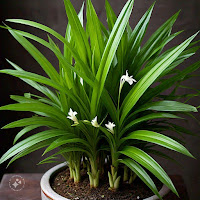RAMBAI LEAVES, PANDAN LEAVES
The Magic of Pandan Leaves
These leaves are otherwise called as rambai leaves. Pandan leaves, also known as the "vanilla of the East," are a mainstay in many Southeast Asian restaurants. Pandan leaves, known for their aromatic smell and adaptability, are utilized in both culinary and medicinal settings. This blog post goes into the many uses and advantages of pandan leaves, as well as the rich cultural heritage they represent. If you're curious about pandan leaves and how they can improve your life, keep reading to learn more about this fascinating plant.
What Are Pandan Leaves and its uses
Pandan leaves come from the the pandanus plant plant, a tropical shrub commonly found all over Southeast Asia. These thin, long, and blade-like leaves are prized for their sweet, floral aroma, which is frequently compared to that of basmati rice or freshly baked bread. Pandan leaves are treasured for their scent, which makes them a key element in many traditional cuisines.
The distinct flavour of pandan leaves is extracted by either boiling them or mixing them into a paste. This particular flavour has made pandan leaves a popular component in a wide range of sweet and savoury cuisines throughout the region.
Pandan leaves cooking
Pandan leaves are commonly used to spice rice. Adding a few pandan leaves to the saucepan while boiling infuses the rice with a delicate, fragrant aroma that improves its flavour.
Pandan leaves are a staple in many traditional desserts. The leaves are used to manufacture pandan extract, which is then mixed into cakes, puddings, and jellies to give them a distinct green tint and delicious flavour.
Pandan leaves can be used to flavour drinks such as tea and milk. Pandan leaf tea, in particular, is popular for its soothing properties and pleasant aroma.
Here are some tips on incorporating pandan leaves into your cooking.
Infusing Liquids: To extract the flavour of pandan leaves, tie a few leaves together and place them in boiling water, coconut milk, or other liquids. Allow them to steep for a while to release the aroma.
Making Pandan Extract: Mix fresh pandan leaves with a little water, then drain to get a brilliant green extract. This extract can be used to season and colour a variety of meals.
Wrapping Food: Wrap meats, fish, or grains in pandan leaves before steaming or grilling. The leaves will add a delightful scent to the food.
Baking: For a unique flavour twist, put pandan extract into cake batter or pudding. Pandan chiffon cake is a famous dish that highlights the delicious flavour of pandan
In savoury applications, pandan leaves are used to wrap meats and shellfish, infusing them with their distinct aroma as they cook. The leaves are also used to curries and soups to enhance their flavour.
An aroma is spread as soon as you throw these leaves into the oil. One or two leaves are enough. You can cultivate it in your garden . A pot is enough for this plant to be grown. Growing pandan leaves at home is a rewarding endeavour. Pandan plants thrive in warm, tropical climates, but they can also be grown indoors with the right care.
Conclusion
Pandan leaves are a unique and adaptable ingredient with an important role in Southeast Asian cuisine and culture. Pandan leaves have a unique aromatic flavour and several health benefits, making them ideal for culinary and medicinal applications. Understanding and embracing the beauty of pandan leaves allows us to embrace this magnificent plant into our life and reap its many benefits. Whether you're a seasoned cook or just starting out, learning about pandan leaves will definitely expand your culinary and cultural experiences.
My plant had excess leaves which started ripening so I had to cut them and thought of storing it in the freezer in a Ziplock cover. A single parent plant produces many baby plants. These baby plants can be re-planted in new pots, as this parent plant withers off easily.
Other Names of Pandan leaves
India - Annapurna leaves, or Rampa leaves.
Sri Lanka- Rampa leaves
Bangladesh-Pulao paata
Common name-Pandan, Fragrant Pandan, Scented Pandan, Screw pine, Indonesian Screw pine, and Pandan Rampeh.
 |
| Pandan leaves cake |






what is the english and hinddi names of these rambai leaves please can you write
ReplyDeletePandan leaves
ReplyDeleteWhere to buy this plant mam
ReplyDelete